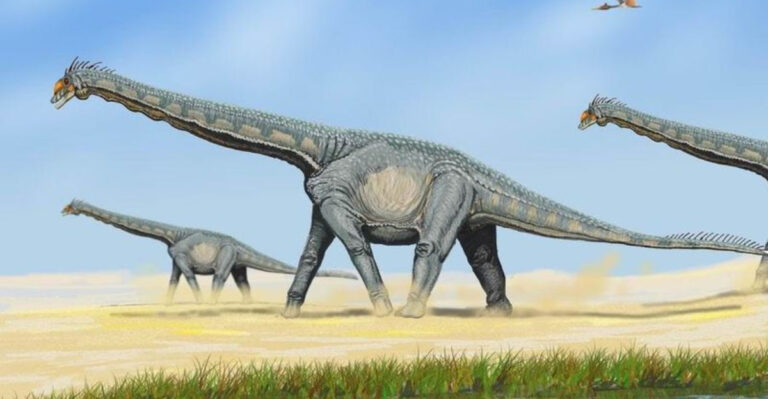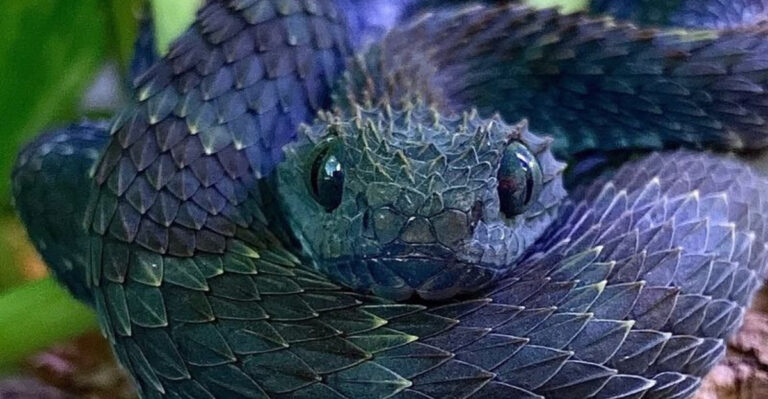The Alligator Gar: Unveiling The Secrets Of A Prehistoric Survivor
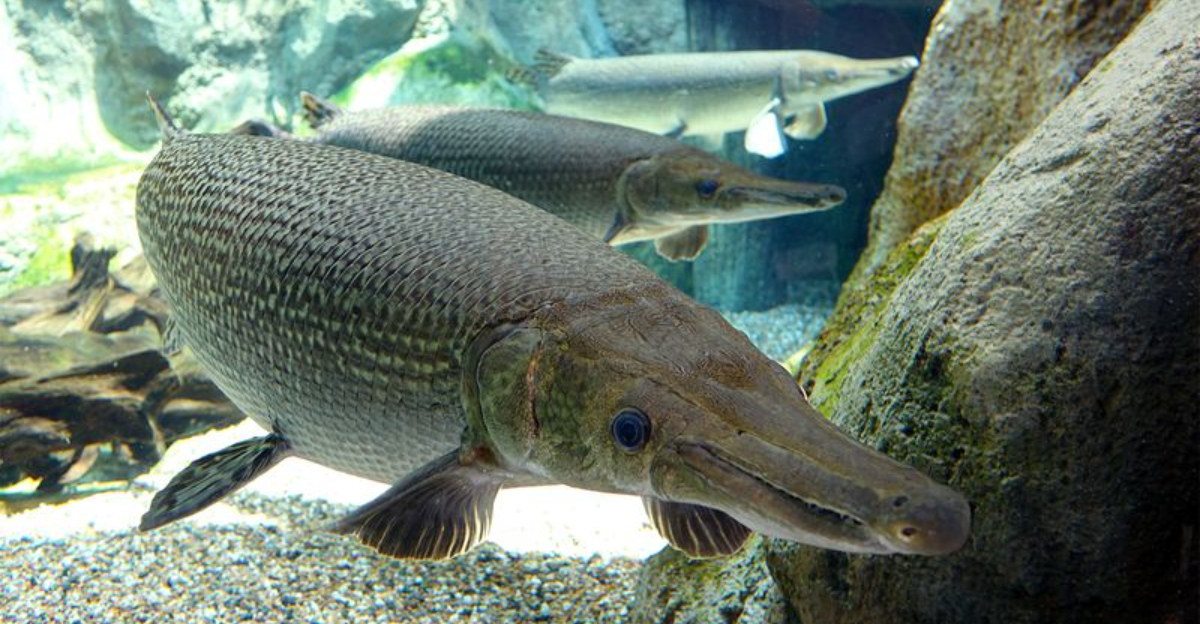
The alligator gar is one of the most fascinating creatures swimming in our waters today. With a lineage stretching back 100 million years, these remarkable fish have survived virtually unchanged since the time of dinosaurs.
Their armor-like scales, dual-row teeth, and ability to breathe air make them unlike any other fish in North America, earning them both fear and admiration from those who encounter them.
1. Living Fossil With Ancient Roots
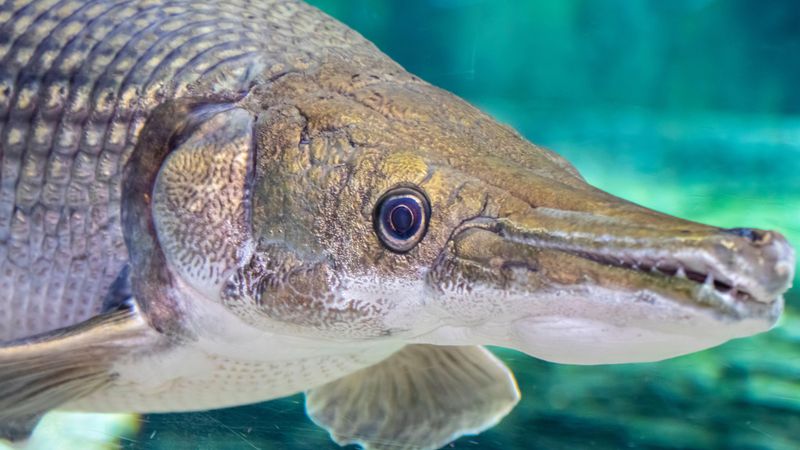
Alligator gars have been swimming Earth’s waters since the Cretaceous period, making them true living fossils. While dinosaurs roamed the land, these prehistoric fish were already perfecting their survival strategies in ancient rivers and wetlands.
Their physical appearance has changed remarkably little over 100 million years. This evolutionary success story speaks to the effectiveness of their design – why change what already works perfectly? Scientists study these ancient survivors to understand how species adapt and persist through major extinction events.
When you look at an alligator gar, you’re essentially seeing the same creature that swam alongside T. rex and survived the catastrophic event that wiped out the dinosaurs.
2. Mistaken Identity: Not Actually Related To Alligators
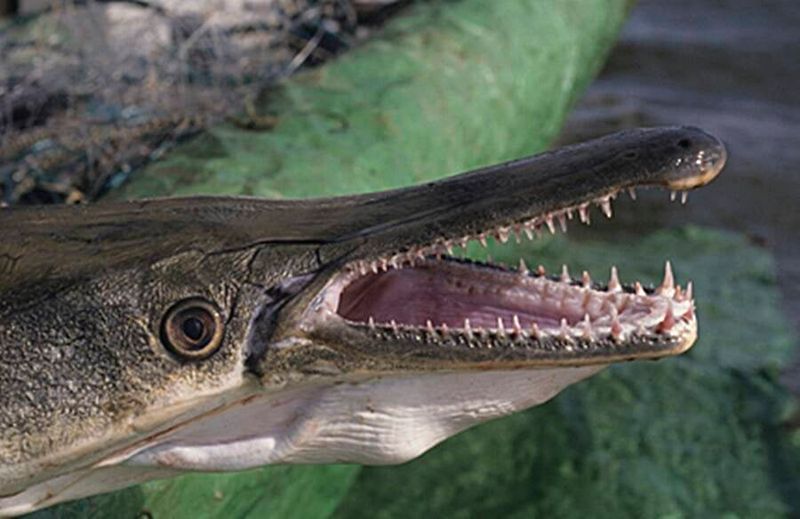
Despite their name and fearsome appearance, alligator gars share no genetic relationship with alligators. The confusion stems from their long, tooth-filled snouts that bear a striking resemblance to their reptilian namesakes.
These fish belong to the Lepisosteidae family, an ancient lineage of ray-finned fish that evolved separately from reptiles. Their alligator-like appearance is a perfect example of convergent evolution – when unrelated species develop similar traits because they work well in their environments.
Early settlers who encountered these massive fish with crocodilian snouts naturally made the connection, giving them a name that has stuck for centuries despite being scientifically inaccurate.
3. Armored Giants Of Freshwater

Alligator gars rank among North America’s largest freshwater fish, with record specimens reaching an astonishing 10 feet in length and weighing over 300 pounds! Their massive size develops slowly, as they can live up to 70 years in the wild.
What makes these fish truly remarkable is their armor-like exterior. Their bodies are covered in ganoid scales – diamond-shaped, bone-like plates coated with an enamel-like substance called ganoin. These interlocking scales create a nearly impenetrable shield against predators.
Early Native Americans and pioneers actually used these tough scales as arrowheads, breastplates, and even as crude planting tools, showcasing their exceptional durability.
4. Breathing Both Water And Air
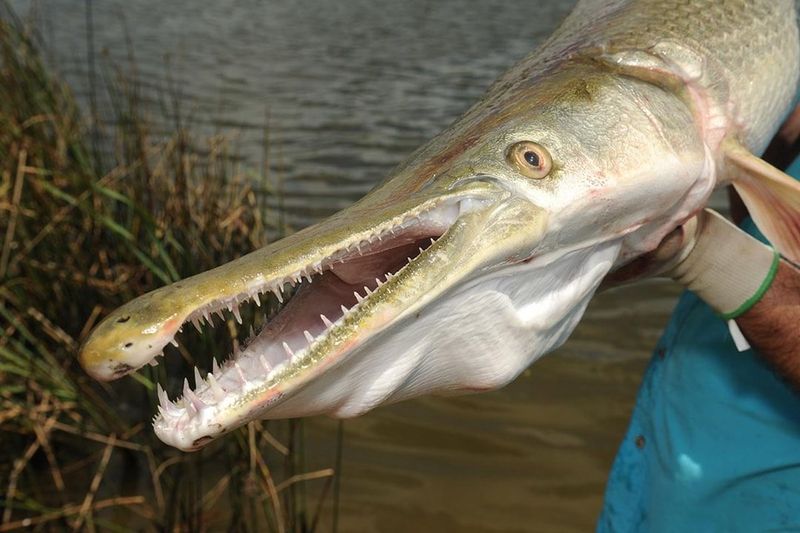
One of the alligator gar’s most remarkable adaptations is its ability to breathe both underwater and on the surface. Unlike most fish that rely solely on gills, these prehistoric survivors possess a swim bladder that functions similar to a primitive lung.
This unique adaptation allows them to survive in oxygen-poor waters where other fish would suffocate. When oxygen levels drop in stagnant summer waters, alligator gars simply rise to the surface, gulp air, and continue hunting.
Scientists believe this dual-breathing capability contributed significantly to their evolutionary success, helping them survive through changing environments and conditions that wiped out countless other species over millions of years.
5. Double Row Of Teeth For Deadly Precision
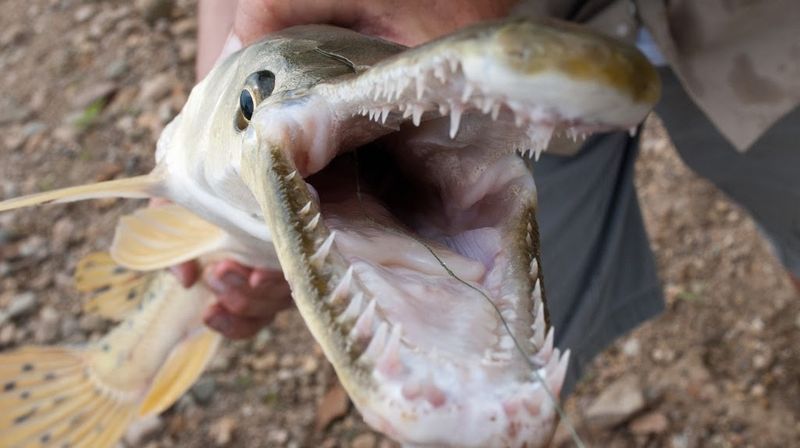
Open an alligator gar’s mouth and you’ll find something truly terrifying – two parallel rows of razor-sharp teeth. This unique dental arrangement makes them incredibly efficient predators, capable of securing prey with minimal effort.
Their outer row of teeth consists of numerous small, needle-like structures perfect for initially grabbing prey. The inner row features larger, fang-like teeth designed for securing and piercing their catch. Together, these create a near-inescapable trap for unfortunate prey.
Fascinatingly, these teeth contain traces of enamel, a characteristic shared with land vertebrates rather than most fish species – another clue to their ancient evolutionary position.
6. Toxic Eggs: Nature’s Defense Mechanism
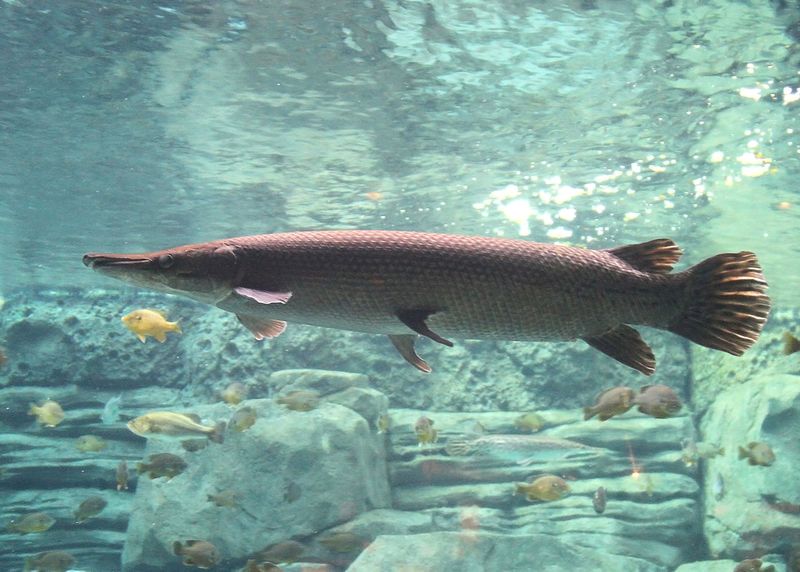
Female alligator gars produce eggs that contain a powerful neurotoxin called ichthyotoxin. This natural chemical defense helps protect their vulnerable offspring from predators during the crucial early development stages.
The toxin is particularly effective against mammals and birds – if ingested, it can cause nausea, vomiting, and even respiratory distress in some cases. Interestingly, certain fish species have developed immunity to this toxin and can still prey on gar eggs.
Researchers studying this toxin believe it may have potential medical applications, particularly in developing new pain management treatments. Nature’s defense mechanisms often inspire breakthroughs in human medicine.
7. Masters Of Ambush Hunting
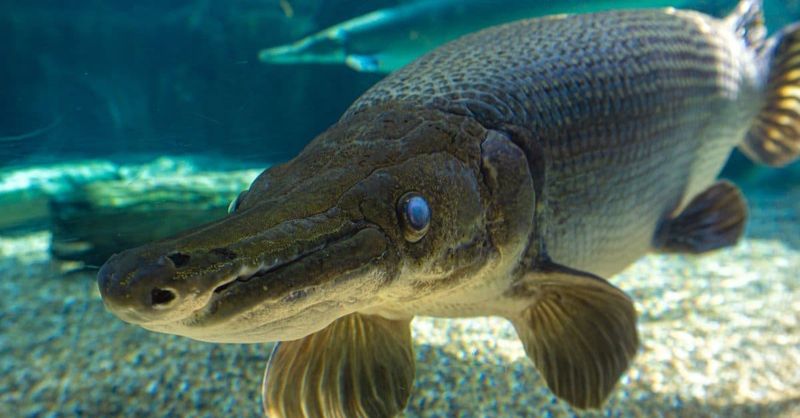
Alligator gars employ a hunting strategy that has remained unchanged for millions of years – the perfect ambush. Their mottled, olive-brown coloration provides excellent camouflage in murky waters, allowing them to blend seamlessly with submerged logs and vegetation.
Rather than actively chasing prey, these patient predators remain motionless, hovering in place until an unsuspecting fish swims within striking distance. When the moment is right, they explode forward with surprising speed, snatching prey in their formidable jaws.
This energy-efficient hunting method suits their biology perfectly. As large, heavy-bodied fish, they conserve energy by ambushing rather than pursuing – a strategy that has served them well since prehistoric times.
8. Unexpected Role As Ecosystem Balancers
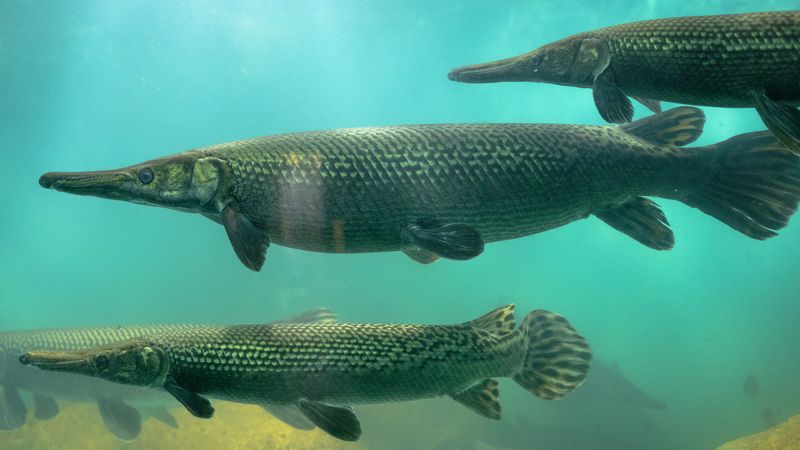
Far from being mere prehistoric monsters, alligator gars serve as crucial ecosystem regulators. Their primary diet consists of abundant species like carp, shad, and tilapia – many of which are invasive or prone to overpopulation.
By controlling these fish populations, gars help maintain balanced aquatic ecosystems. Without these ancient predators, certain species would explode in numbers, depleting oxygen and resources for other aquatic life. Conservation efforts now recognize gars as ecological heroes rather than “trash fish” as they were once unfairly labeled.
Some wildlife departments have even begun reintroducing alligator gars to waterways where they were previously eliminated, acknowledging their vital role in maintaining healthy aquatic communities.
9. From Villains To Conservation Priorities

For decades, alligator gars were misunderstood and persecuted. Fishermen and wildlife officials often killed them on sight, believing they threatened game fish populations. Some states even had bounties on these ancient fish, leading to dramatic population declines.
Today, scientific understanding has completely reversed this perception. Researchers now recognize alligator gars as important native predators that have coexisted with other fish species for millions of years. Most states have implemented strict harvest regulations or complete protection for these living fossils.
Conservation success stories are emerging as populations slowly recover in protected areas. This remarkable shift represents one of the most dramatic turnarounds in wildlife management philosophy.
10. Record-Breaking Egg Production

Female alligator gars are reproductive powerhouses, producing egg counts that stagger the imagination. A single large female can release between 60,000 to 150,000 eggs during spawning season – one of the highest egg counts of any freshwater fish in North America.
This incredible reproductive capacity serves as a survival strategy. With so many potential offspring, even if 99.9% fail to reach adulthood, the species can maintain stable populations. Spawning typically occurs in spring when females release their eggs in shallow, vegetated areas where males fertilize them.
The sticky eggs attach to plants and submerged objects, developing for about a week before hatching into tiny, vulnerable fry that must immediately fend for themselves.
11. Surprising Intelligence And Learning Ability
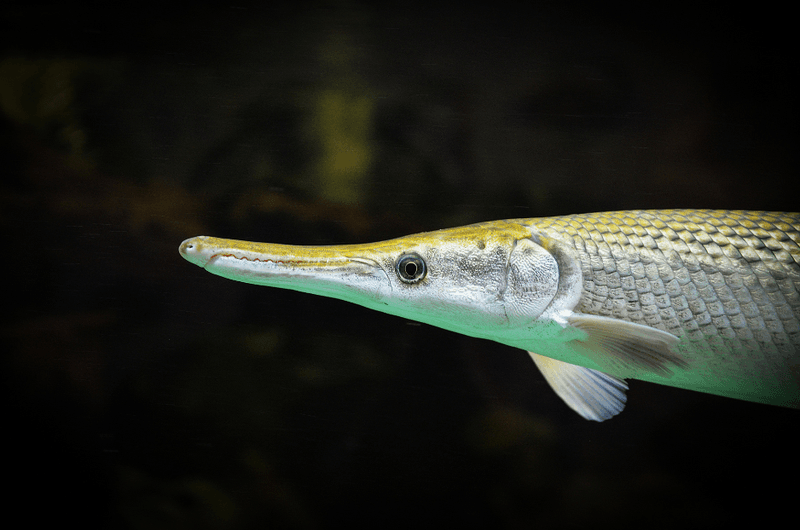
Despite their prehistoric appearance and reputation, alligator gars demonstrate unexpected intelligence. Aquarium studies reveal they can recognize their keepers, adjust feeding behaviors based on experience, and even learn to avoid certain threats after a single encounter.
Their brain structure, while primitive compared to mammals, contains specialized regions for processing complex sensory information. This cognitive capacity helps them navigate changing environments and adapt to new conditions – likely contributing to their remarkable evolutionary longevity.
Some gar owners report their fish responding to visual cues and hand signals for feeding, suggesting these ancient creatures possess learning abilities previously underestimated by scientists who dismissed them as primitive “living fossils.”
12. Surviving Harsh Conditions Through Adaptation
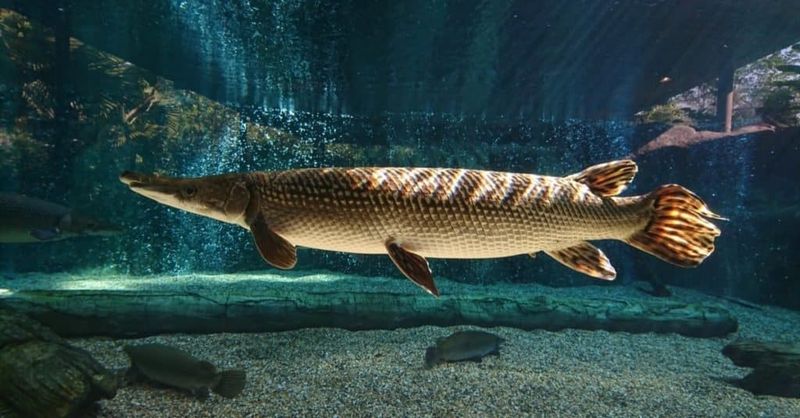
Alligator gars possess remarkable resilience to environmental stressors that would kill most fish. Their ability to breathe air allows them to survive in oxygen-depleted waters during summer heat or drought conditions when other fish perish.
Their tough scales provide protection against both predators and harsh physical environments. These ancient fish can tolerate a wide range of water conditions, including temperatures from near-freezing to over 90°F, and can even survive in brackish water where rivers meet the sea.
During extreme drought, alligator gars can burrow into mud and enter a state of reduced metabolism, essentially waiting for better conditions to return – another adaptation that has helped them survive through millions of years of environmental changes.
13. Future Prospects In A Changing World
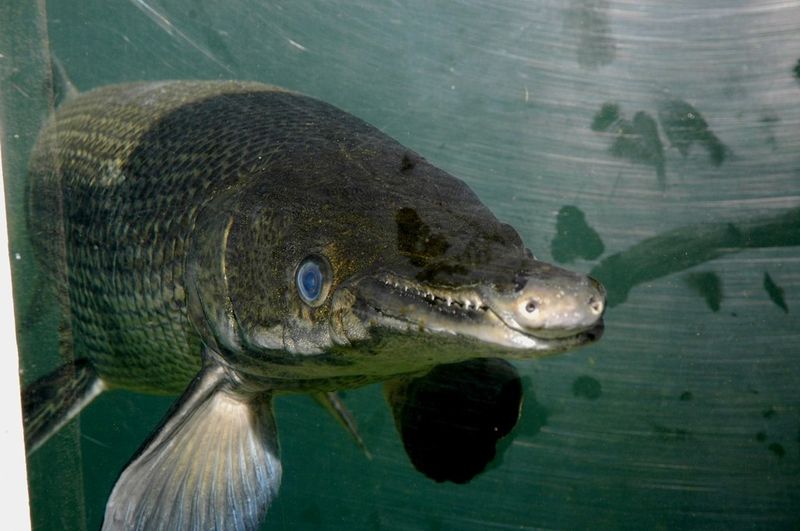
After surviving multiple mass extinctions over 100 million years, alligator gars now face uniquely human challenges. Habitat destruction, water pollution, and river damming threaten their spawning grounds and migration routes more than any previous environmental change.
Climate change presents a complex picture – while these adaptable fish can tolerate extreme conditions, rapidly shifting ecosystems may disrupt the food webs they depend on. Conservation efforts focus on habitat restoration and managed reintroductions to waters where they were previously eliminated.
Scientific interest in these living fossils continues to grow, with researchers studying their unique biology for insights into evolutionary resilience and potential medical applications from their scales, toxic eggs, and immune systems.




